The Best Core Exercises for Runners
6 Exercises to Build Strength and Stability for Running
If you want to be a good runner, just get out there and run. But if you want to be a great runner, adding in some core work to your routine is essential. You may not even realise it, but when you run, your body is constantly adapting to stabilise your movements and maximise efficiency. Your core muscles - your abs, obliques, back, and pelvis—are there to support and stabilise you as you run. Strengthening your core improves stability, balance, control, and most importantly, running form. This will allow you to be a more efficient and injury-free athlete.
Proper Form is Key
- Engage your core by drawing in your navel and holding your muscles tight.
- Make straight lines with your spine.
- Continue to breathe normally throughout each exercise!
- Remember that proper form is key, so only hold an exercise for as long as you can maintain this. If you do an exercise beyond this point, your body will simply find ways to compensate, leading to bad habits and forming patterns of misalignment without strengthening the targeted area. Therefore this will provide no additional benefit.
So more is not always better. The times, reps and workout frequencies are highly dependent on personal needs and will vary between individuals. Start with what you can manage and progressively increase it from there.
The Top Core Exercises for Runners
When it comes to core strength, not all exercises are created equally. To get the best bang for your buck, you're going to have to do more than just sit-ups and crunches. The exercises outlined below will work on your aesthetic core muscles as well as strengthen the stabilisation muscles key to improving your running form. Best of all, this routine can be done anywhere so there are no excuses not to get it done. All you need is your body weight and the aid of a stability ball for the last exercise.
The Standard Plank
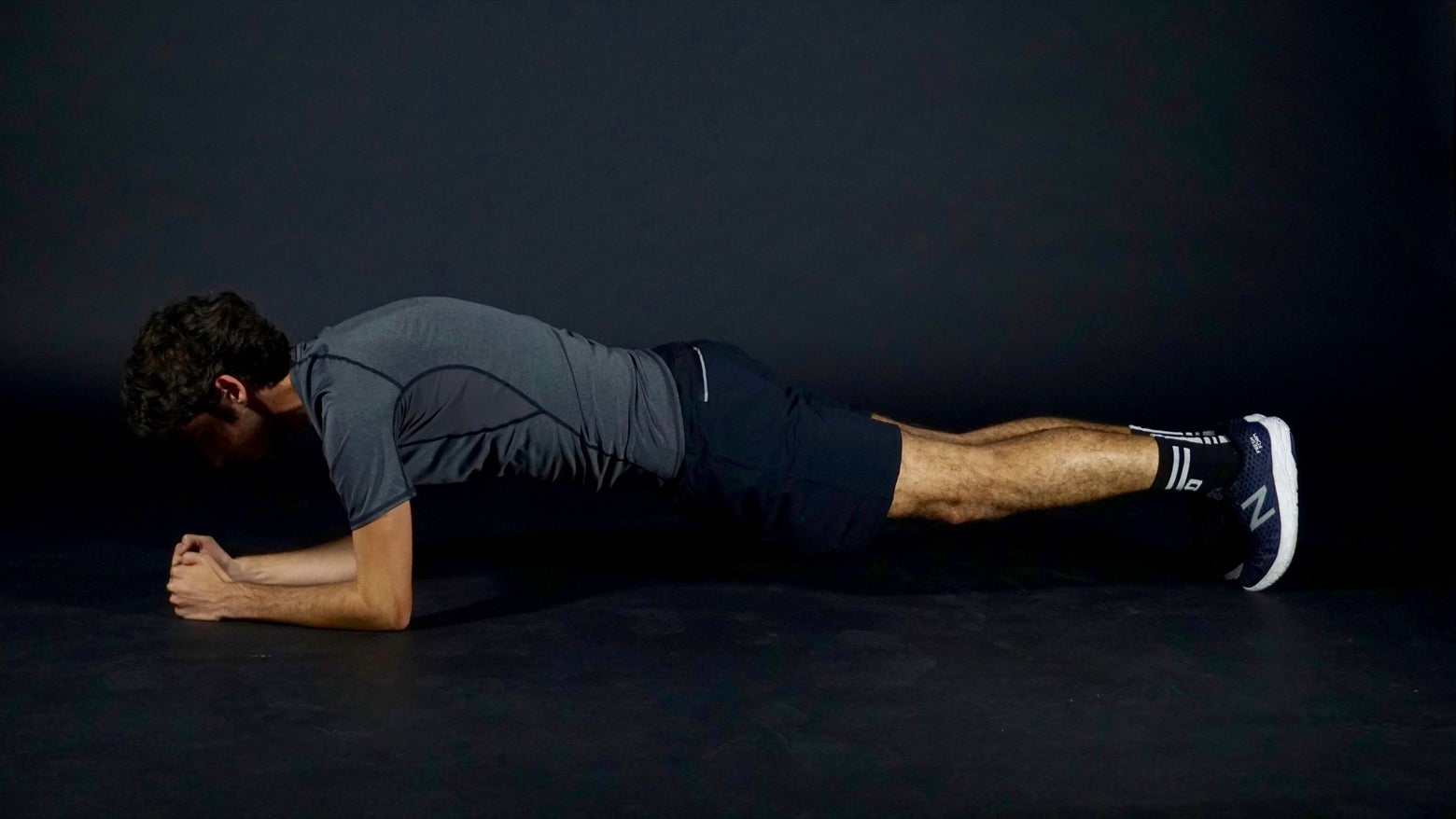
Proper Form:
- Your elbows should be directly below your shoulders, and your forearms should be parallel to one another. Alternatively, you can interlace your hands. Hold a stable position and avoid moving your arms in order to extend the amount of time that you can hold the position.
- Your head should be in line with your spine, with your eyes focused down at the floor. Avoid craning your neck back so that you can look straight out in front of you.
- Maintain a straight line from your heels to the crown of your head.
- Hold this position for as long as you can maintain good form.
Variation:
- High plank: Place your hands on the ground directly below your shoulders, keeping your arms straight.
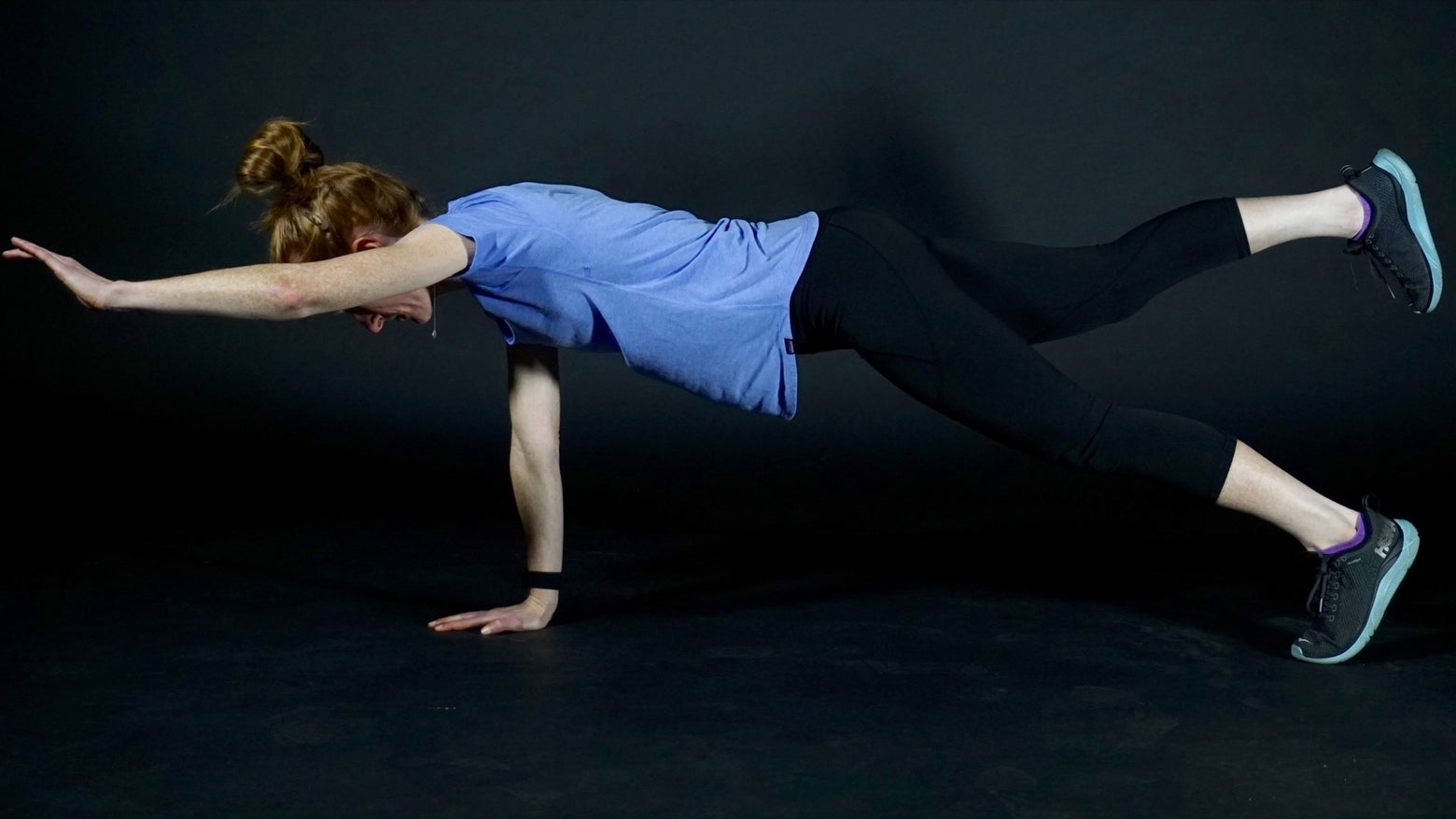
Progression:
- Opposite arm-leg raise high plank: Beginning in high plank, simultaneously lift your right leg and left arm until they are parallel to the floor. Hold this position for about 3 seconds, then perform the same motion with your opposite arm and leg. Continue alternating.
Side Plank
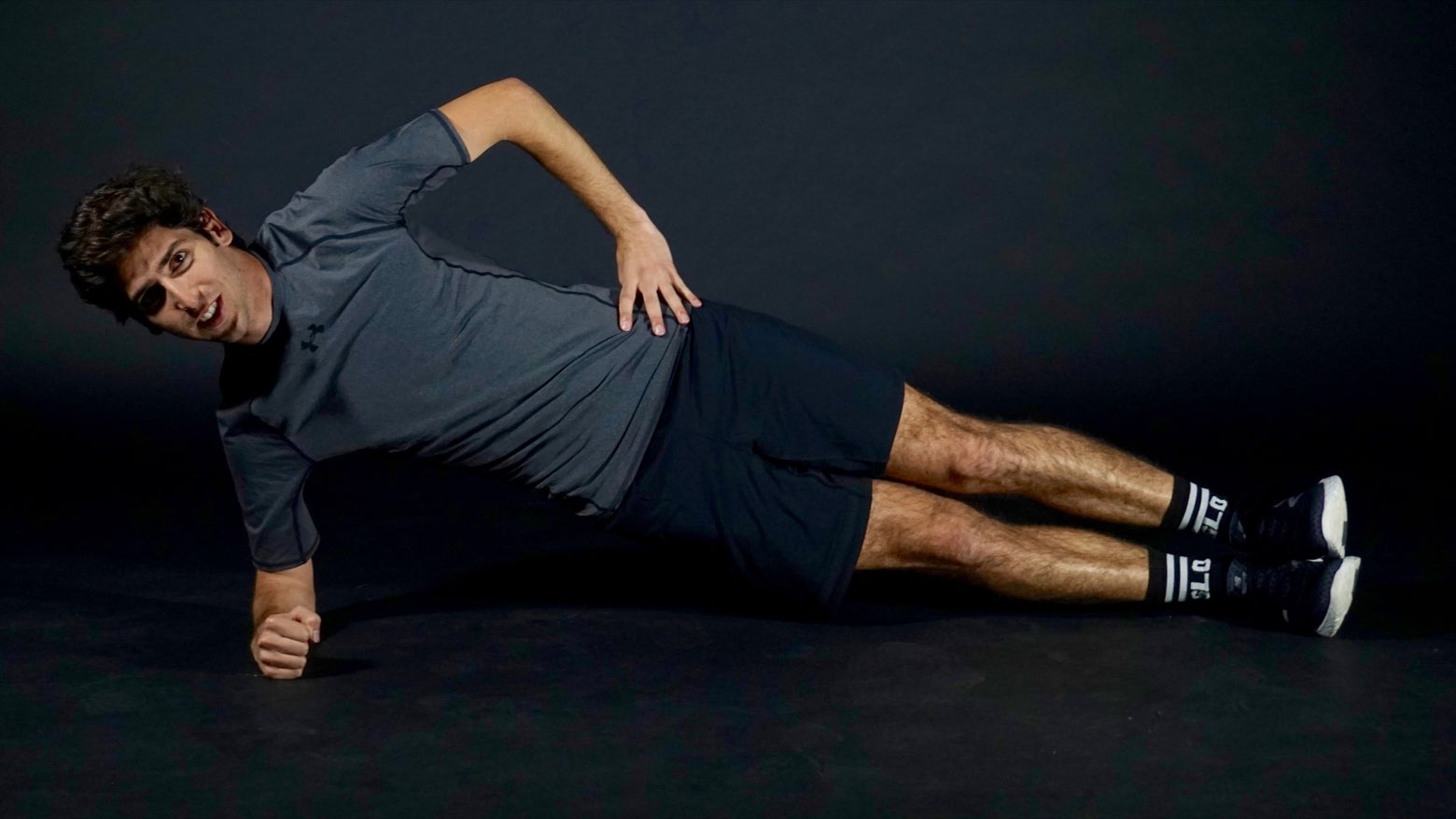
Proper Form:
- Your elbow should be directly below your shoulder, with your forearm extending perpendicular to your body.
- Keep your head in line with your spine, with your eyes focused directly in front.
- Maintain a straight line from your heels to the crown of your head.
- You can either keep your top arm in line with your body or raise it straight up so that it is perpendicular to the floor.
- Hold this position for as long as you can maintain good form.
Variation:
- High side plank: Place your hand on the ground directly below your shoulder and keep your arm straight.
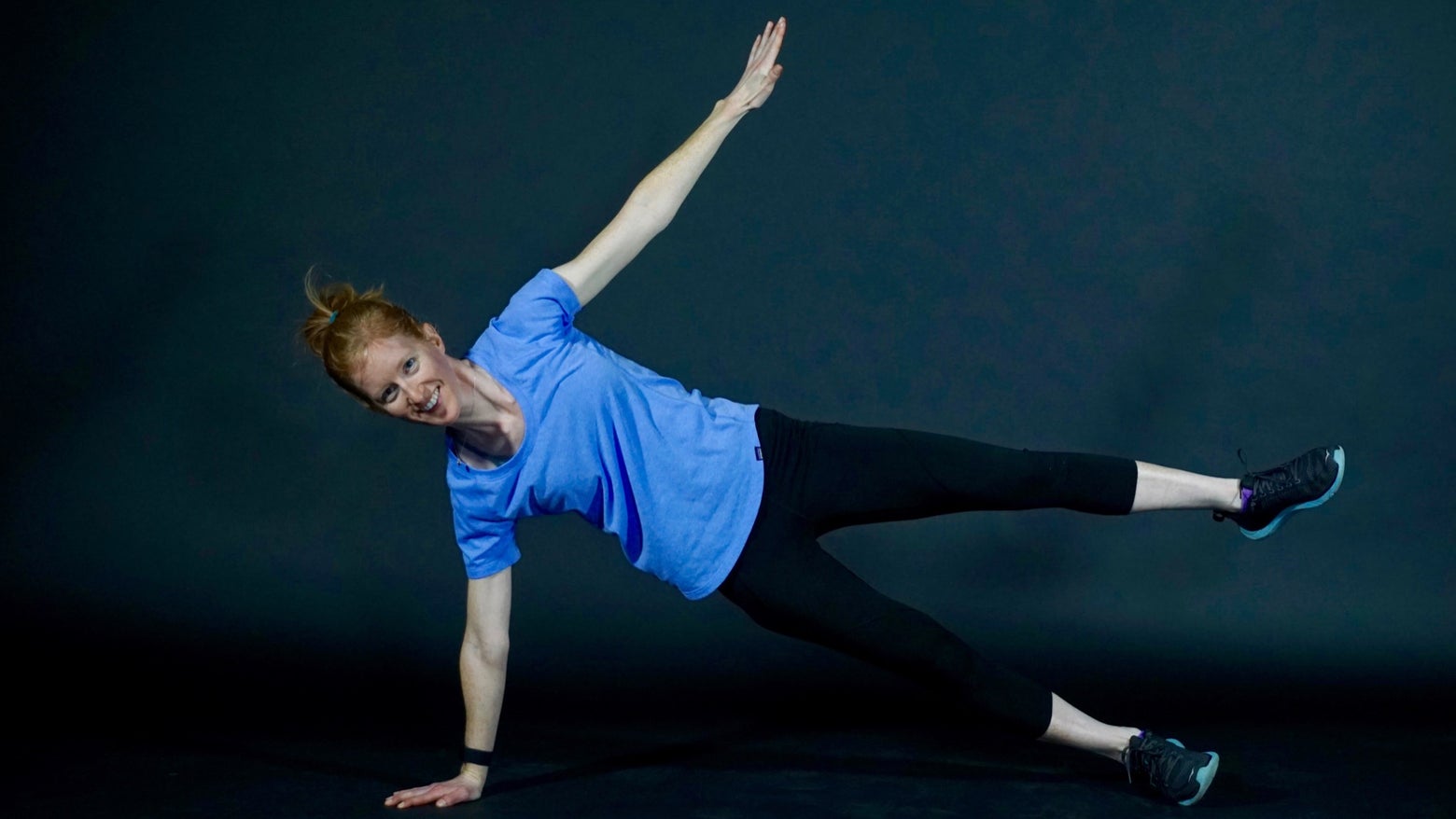
Progression:
- Side plank with leg abduction: Start in side plank or high side plank, then raise your top leg and hold.
Boat
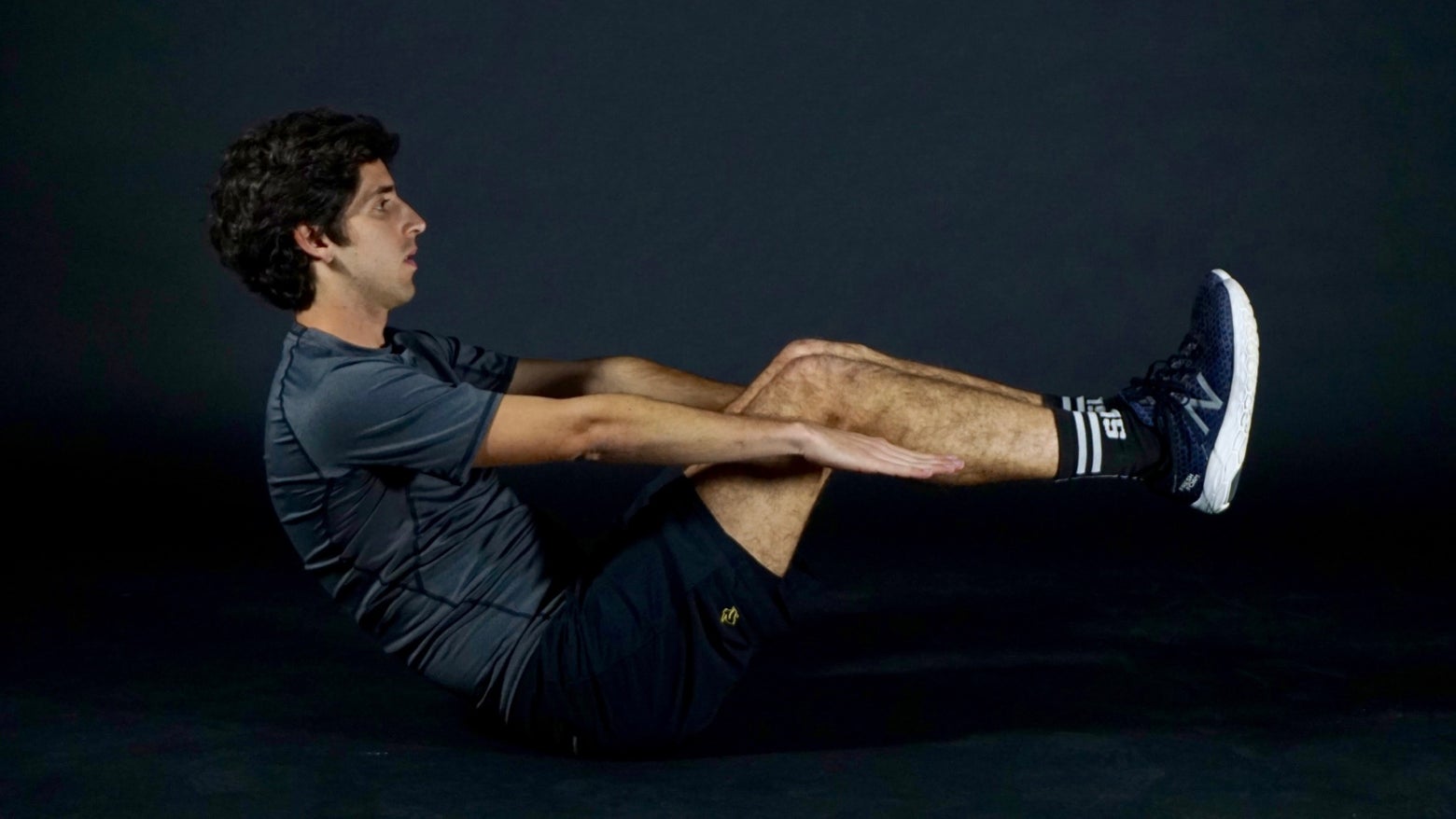
Proper form:
- Make a 90 degree angle with your hips at the floor.
- Bend your knees so that your shins are parallel to the floor.
- Keep your feet next to each other without crossing your ankles.
- Try to keep your back as flat as possible.
- Hold this position for as long as you can maintain good form.
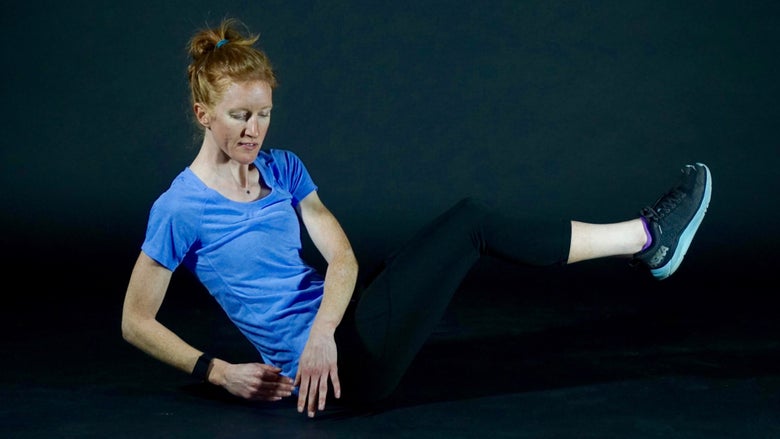

Progression:
- Boat twists: Start in boat position then twist your torso and alternate touching your hand to the floor on the opposite side of your body. Try holding a weighted object to add resistance.
Bridge
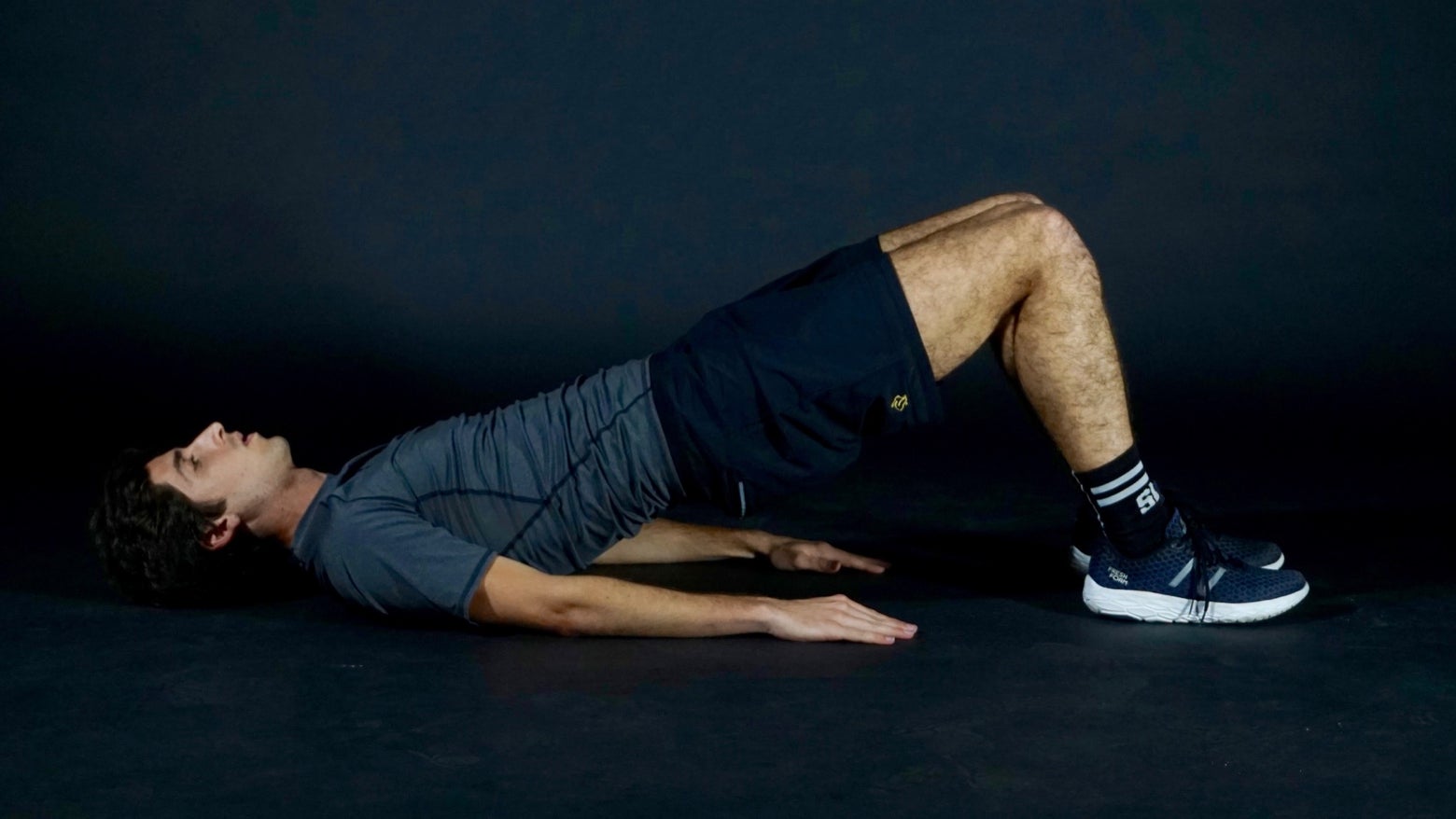
Proper form:
- Keep your shoulders and head flat on the ground and your arms parallel to your body.
- Your knees and feet should be pointing straight ahead with your feet about shoulder-width apart.
- Your hamstrings, glutes, and back should all be engaged in order to create a straight line from your knees to your chest.
- Hold this position for as long as you can maintain good form.
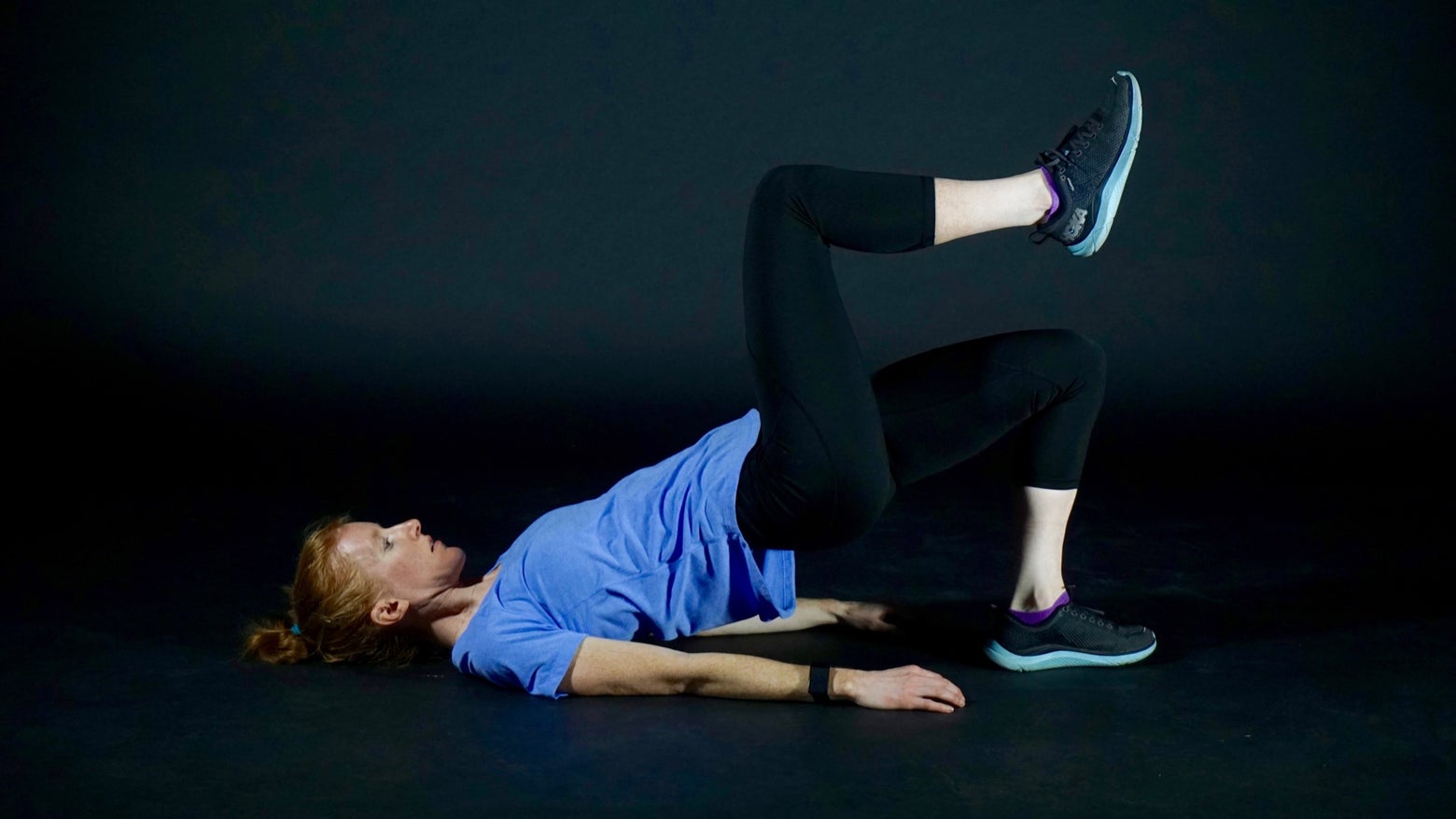
Progression:
- Marching bridge: While holding the correct bridge form, alternate lifting your feet high off the ground one at a time.
Cobra
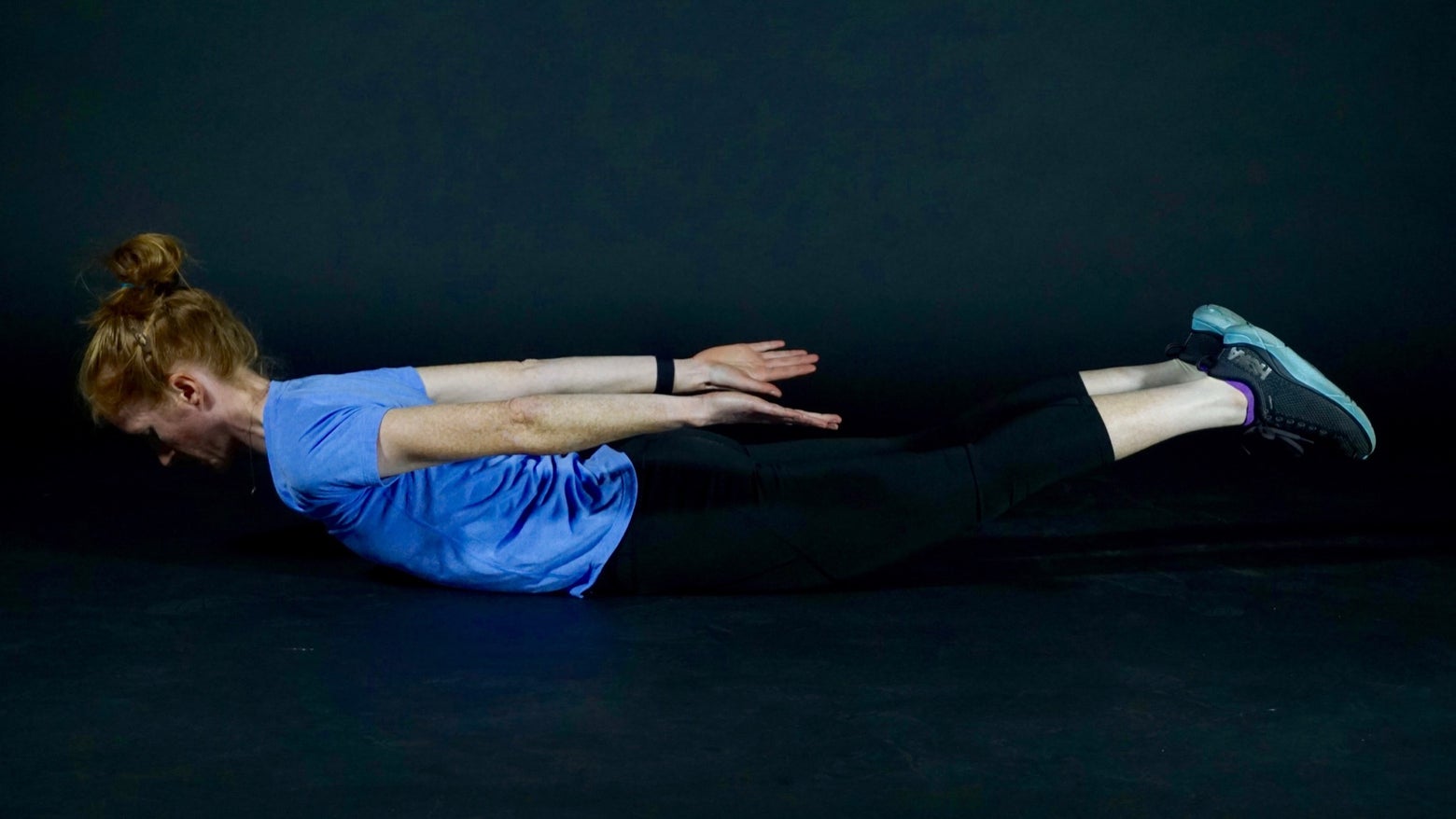
Proper form:
- Laying prone on the floor with your arms by your sides, simultaneously lift your torso and legs a few inches.
- Keep your eyes focused just a few inches in front of you. Avoid not craning your neck back to look straight ahead.
- You can interlace your hands behind your back if you would like.
- Hold this position for as long as you can maintain good form.
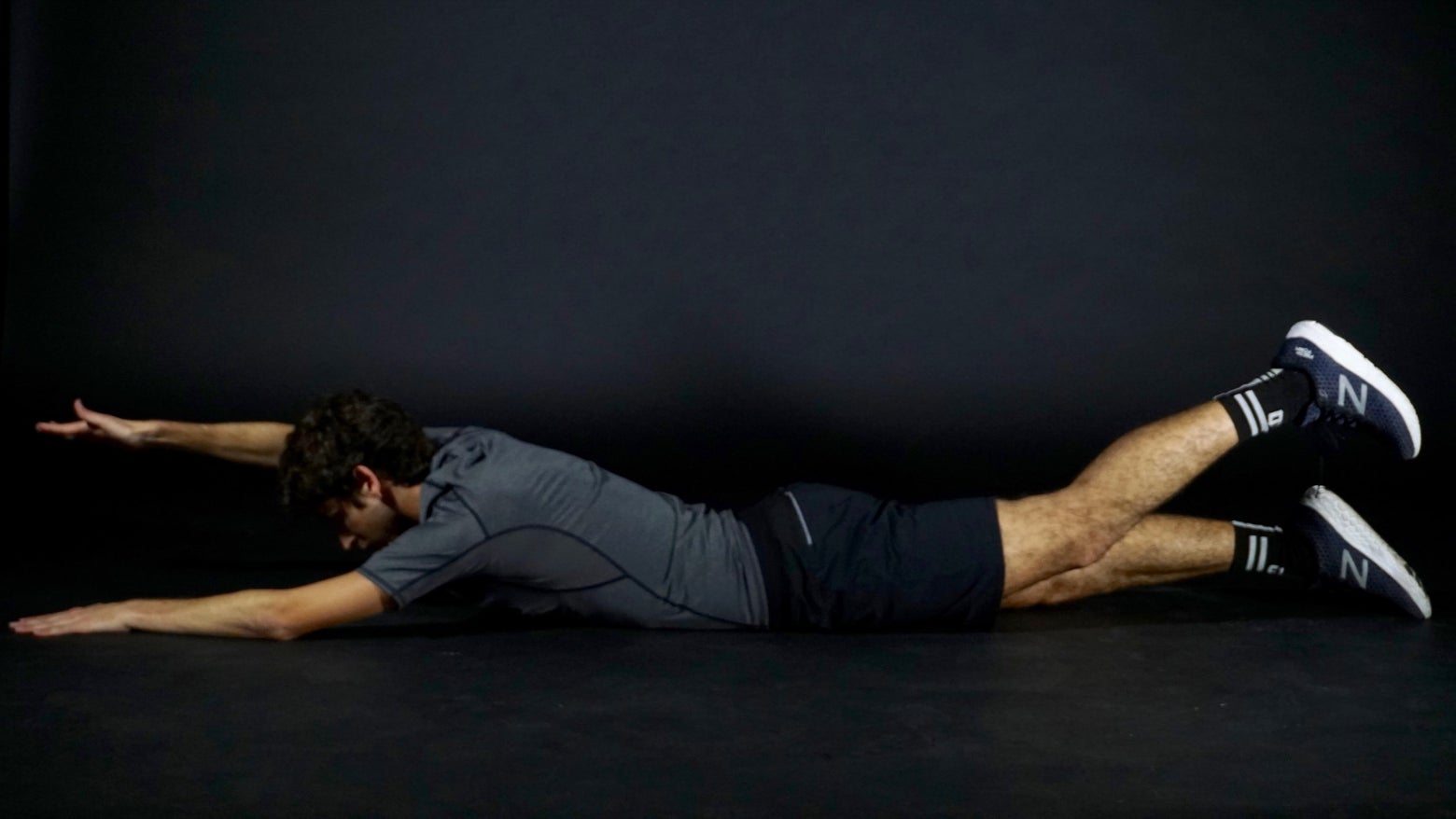
Progression:
- Superman: Similar to cobra, but lift one arm in front of your body and the opposite leg and hold for about 3 seconds. Switch to the opposite arm and leg and continue alternating.
Stability Ball Tucks
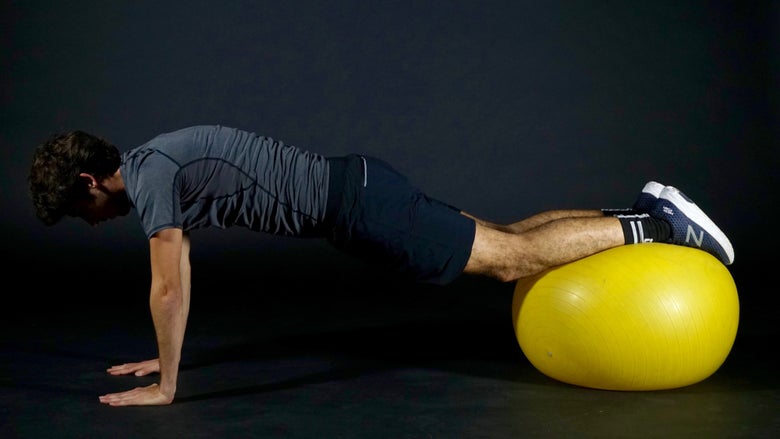

Proper form:
- Place your hands on the ground directly below your shoulders.
- Keep your spine straight all the way through your head.
- Start with your legs fully extended and feet on a stability ball.
- Bring your legs into a tuck, rolling the ball up and back with control. Repeat.